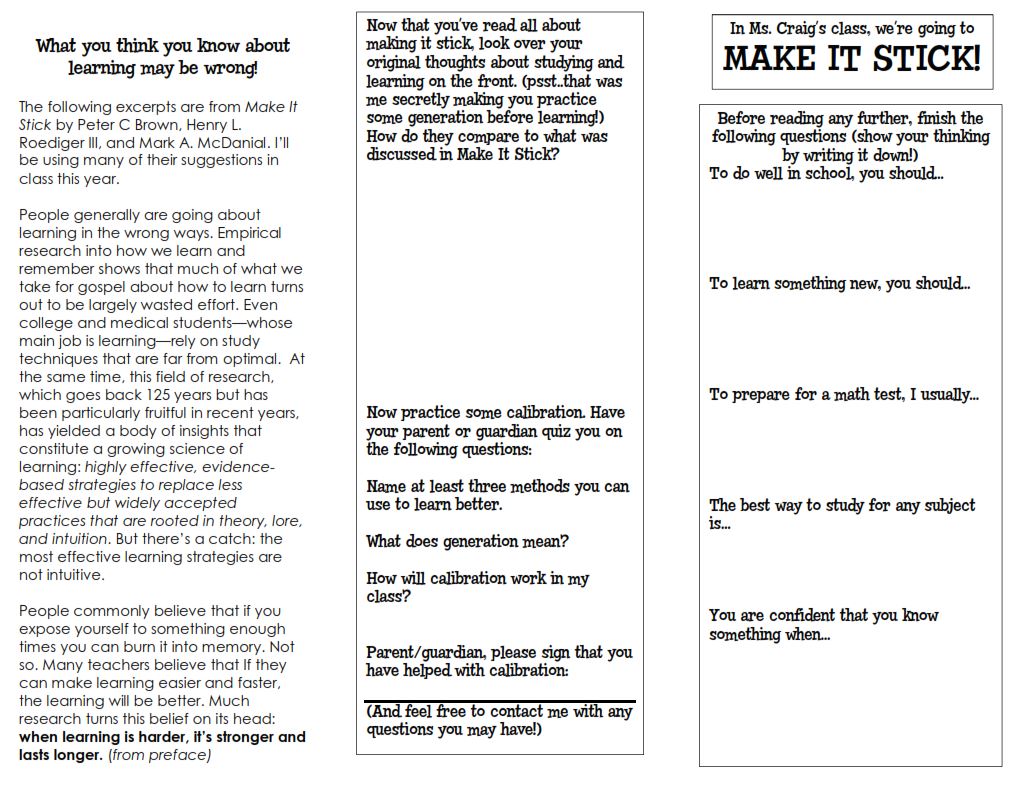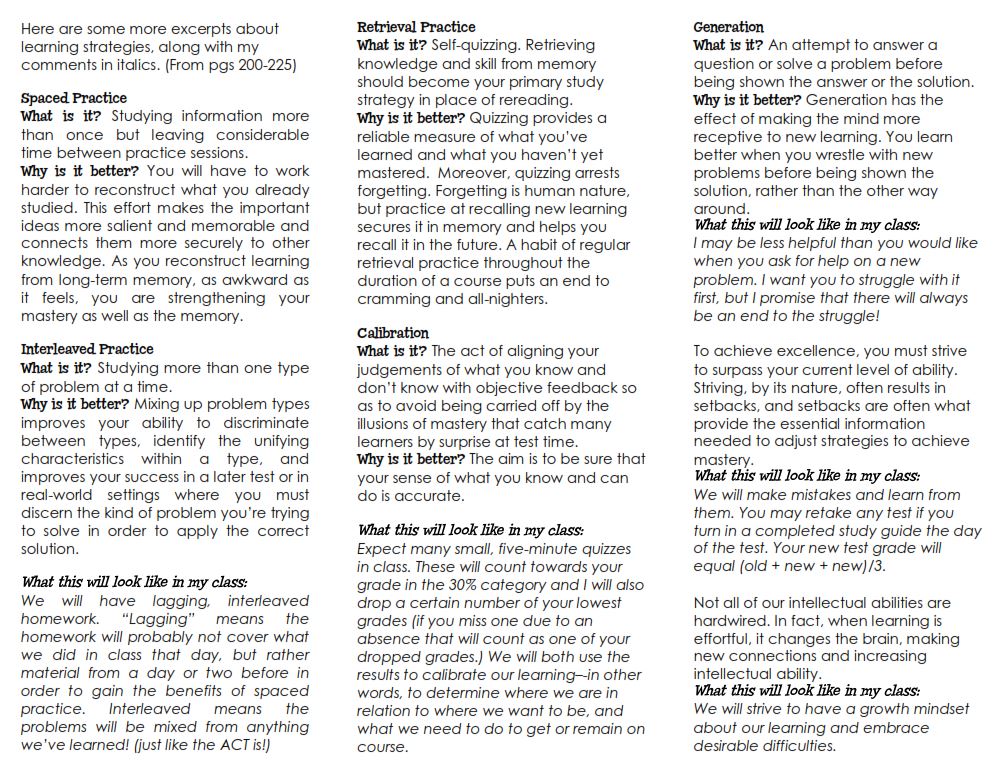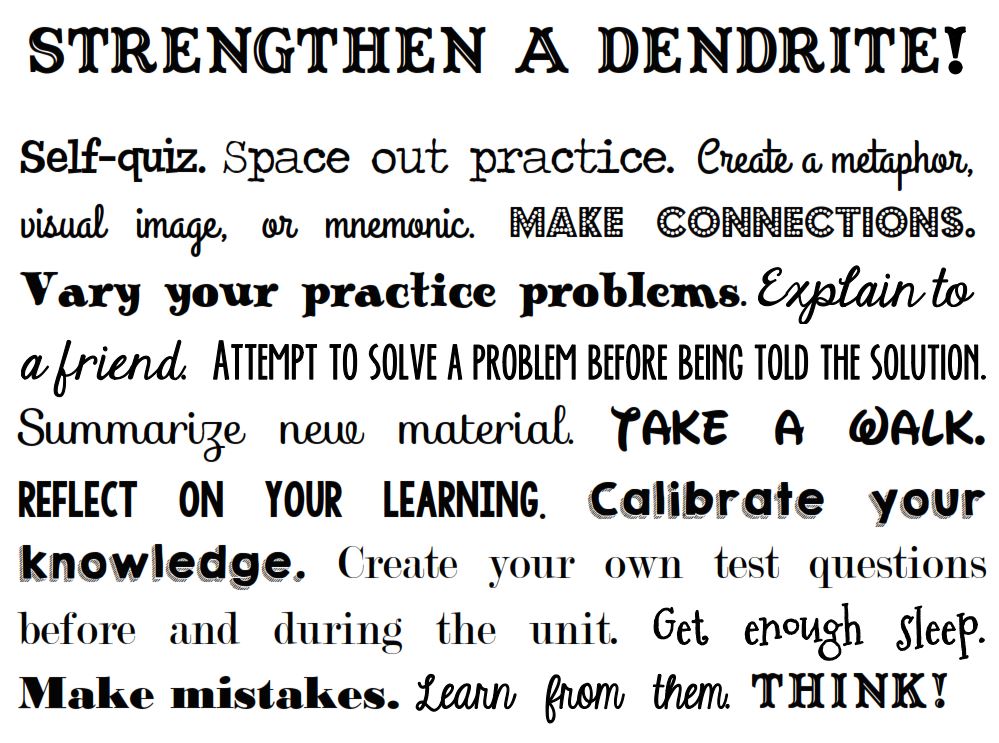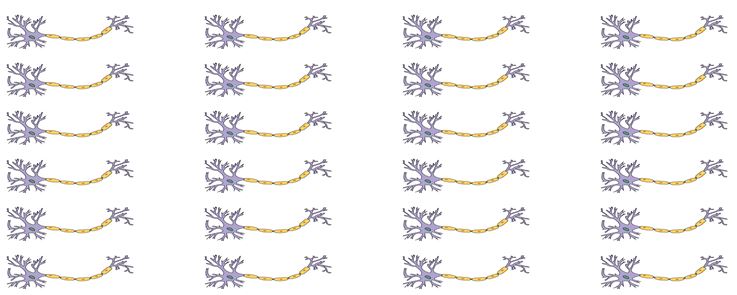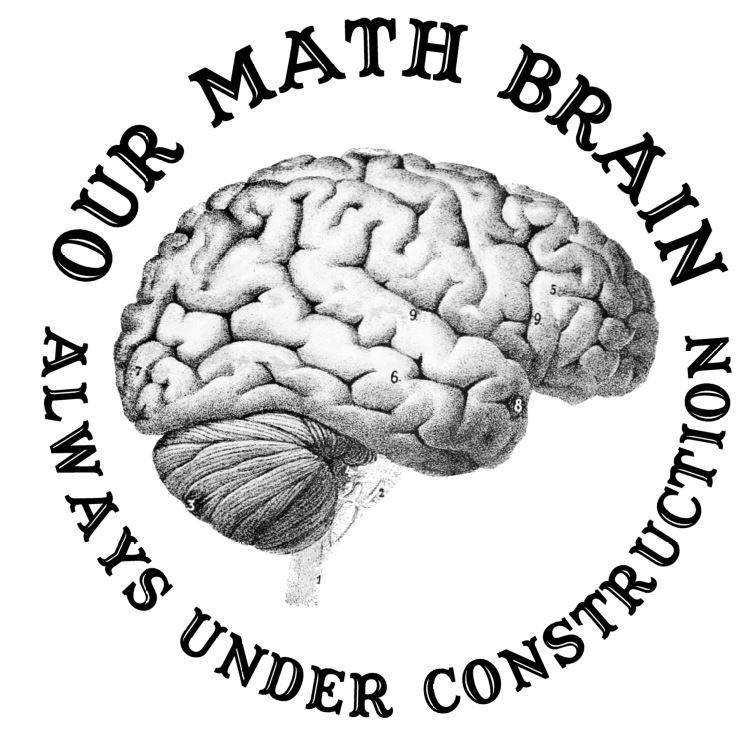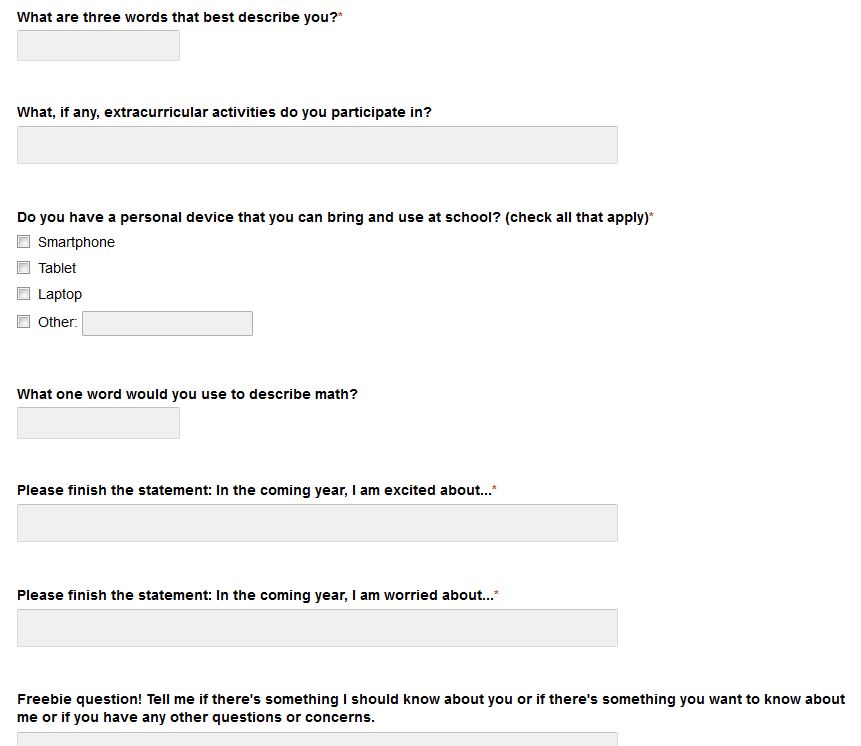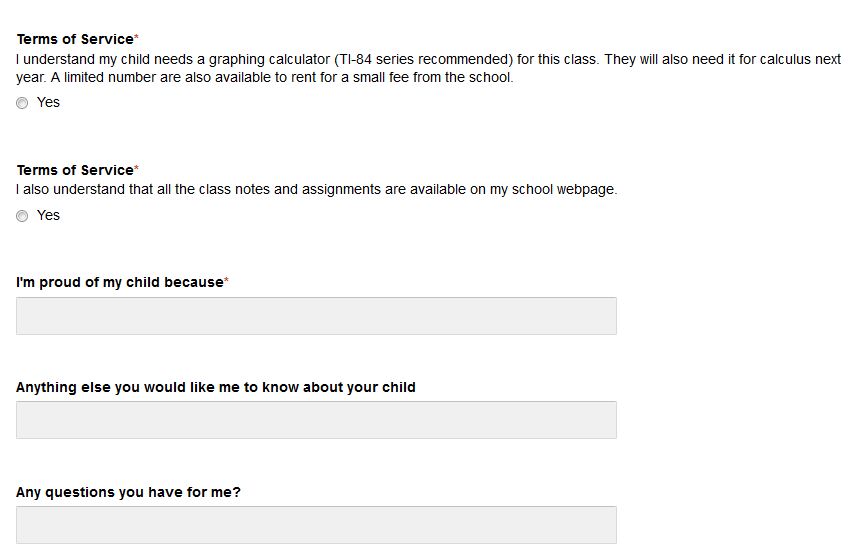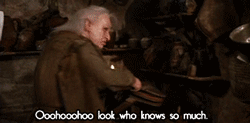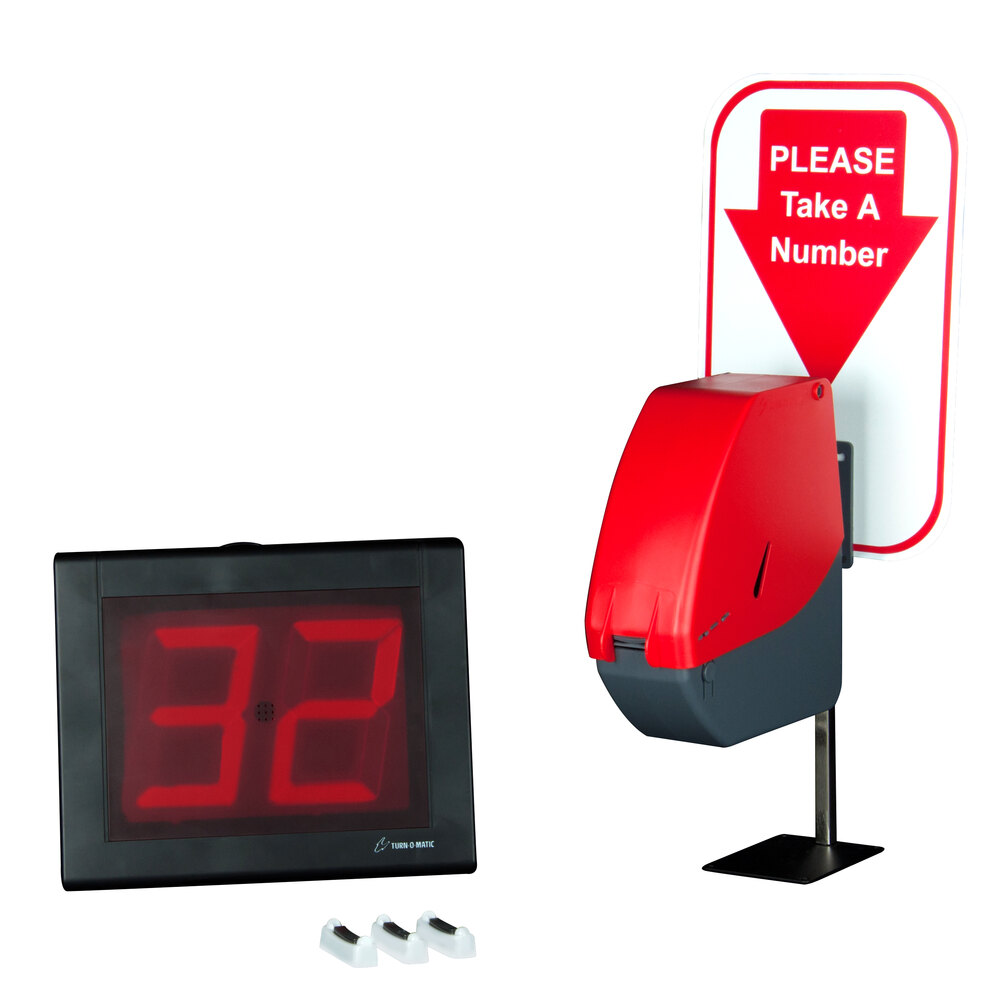News flash: I secretly love making math powerpoints. I need to find a job that is just making them (and NoteTakerMakers) all day. Or maybe half a day because, ok, it would probably get old after a while. But for now, enjoy the bounty of my obsession.
Our textbook starts the radicals chapter by doing composition and inverse of functions, so that’s where I start as well:
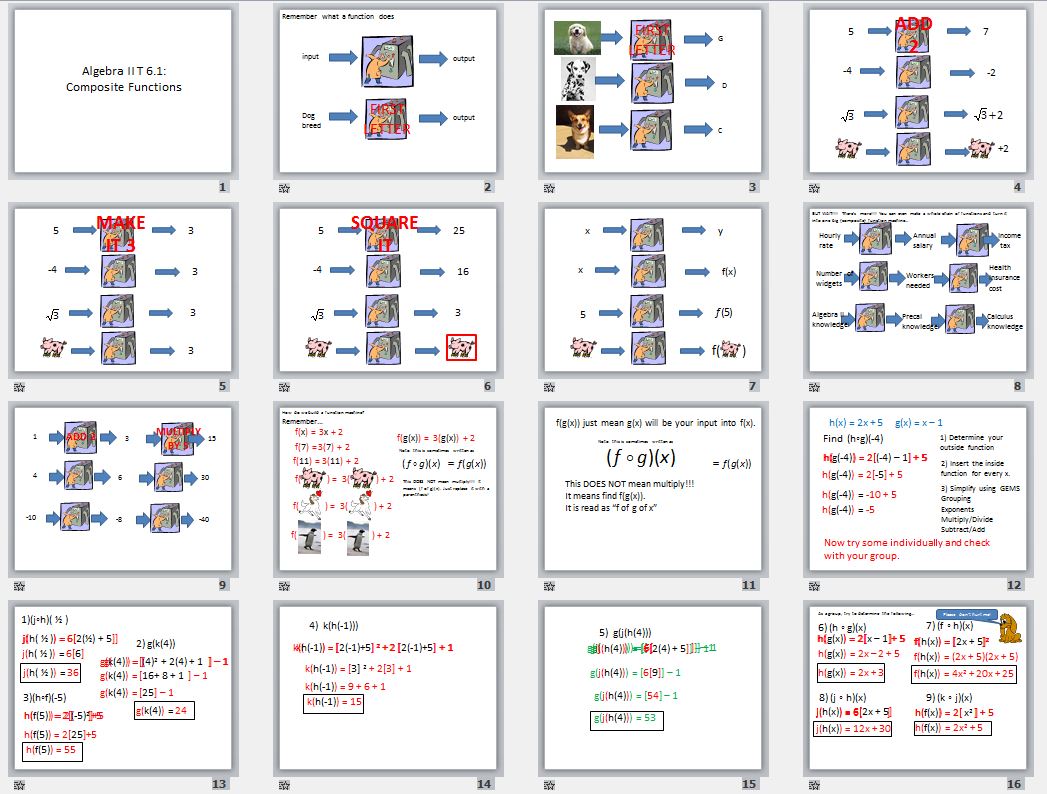
(file here). I have to spotlight my two favorite slides:
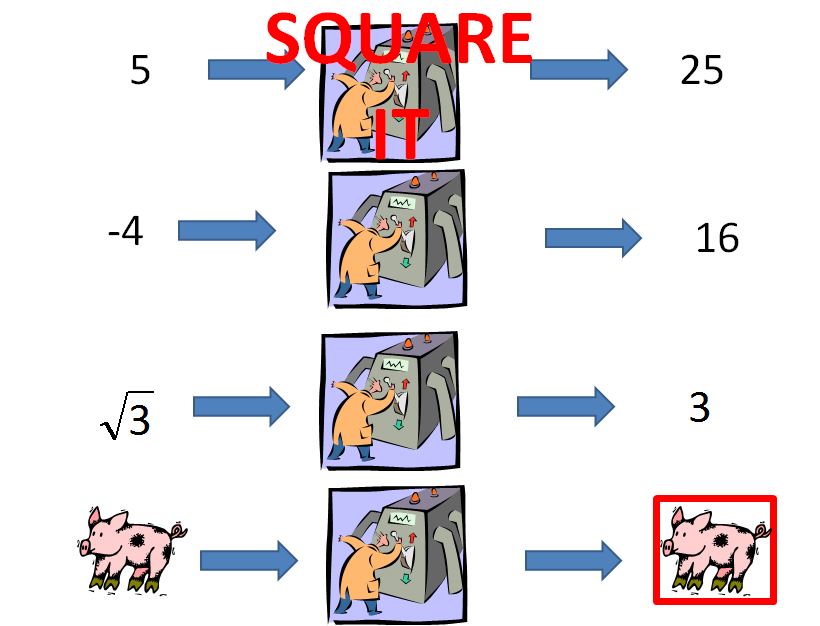
Yes, “pig squared” gets a laugh every time.
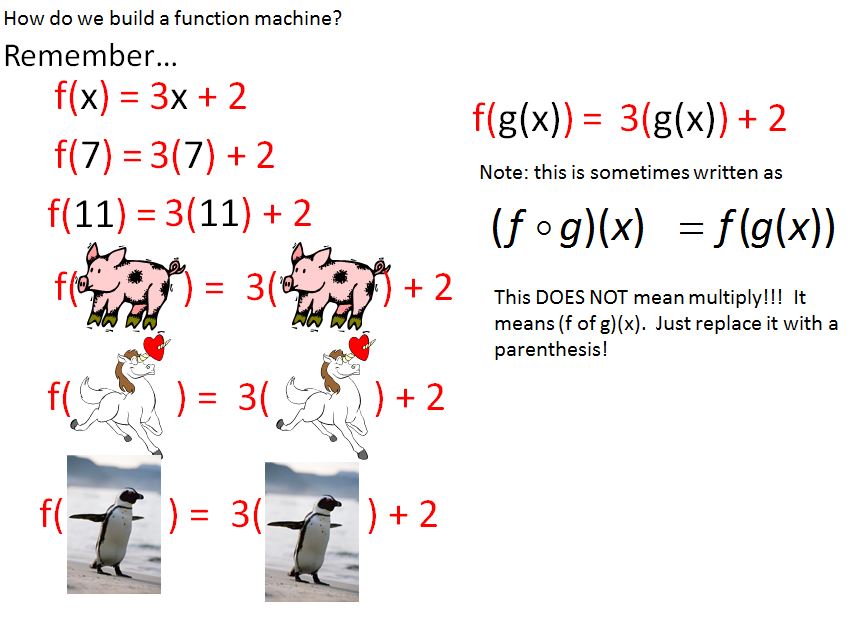 Funny story: On one of my student’s review of a Vi Hart video, the student said that Vi talked about doing some operation with dolphins. The student said that didn’t bother her because “my teacher does math with corgis and unicorns.” Awesome!
Funny story: On one of my student’s review of a Vi Hart video, the student said that Vi talked about doing some operation with dolphins. The student said that didn’t bother her because “my teacher does math with corgis and unicorns.” Awesome!
And yes, there is an NTM to go with it:
 (file here) For the past [redacted] years, I’ve always worked from the inside out on functions, then I had an epiphany last year…try working from the outside in! For example, on that first problem, it’s j(h(1/2)). Let’s start with j, which is 6x, but we know we’re going to replace x, so we’ll write 6( ). What are we filling that with? Oh, h! So now we have 6(2( )+5) and what do we want to put in there? oh, 1/2! 6(2(1/2)+5)! I found it really helpful for when there’s more than one x that you have to plug in for, like #4. Anyway, just thought I’d mention it since it’d hard to tell what order I’m doing things on the key. We need magical time-telling paper. Get on that, people.
(file here) For the past [redacted] years, I’ve always worked from the inside out on functions, then I had an epiphany last year…try working from the outside in! For example, on that first problem, it’s j(h(1/2)). Let’s start with j, which is 6x, but we know we’re going to replace x, so we’ll write 6( ). What are we filling that with? Oh, h! So now we have 6(2( )+5) and what do we want to put in there? oh, 1/2! 6(2(1/2)+5)! I found it really helpful for when there’s more than one x that you have to plug in for, like #4. Anyway, just thought I’d mention it since it’d hard to tell what order I’m doing things on the key. We need magical time-telling paper. Get on that, people.
Here’s the homework (I found that finding function values from a chart or graph is something that Precal students struggled with, so I tried to add some practice)
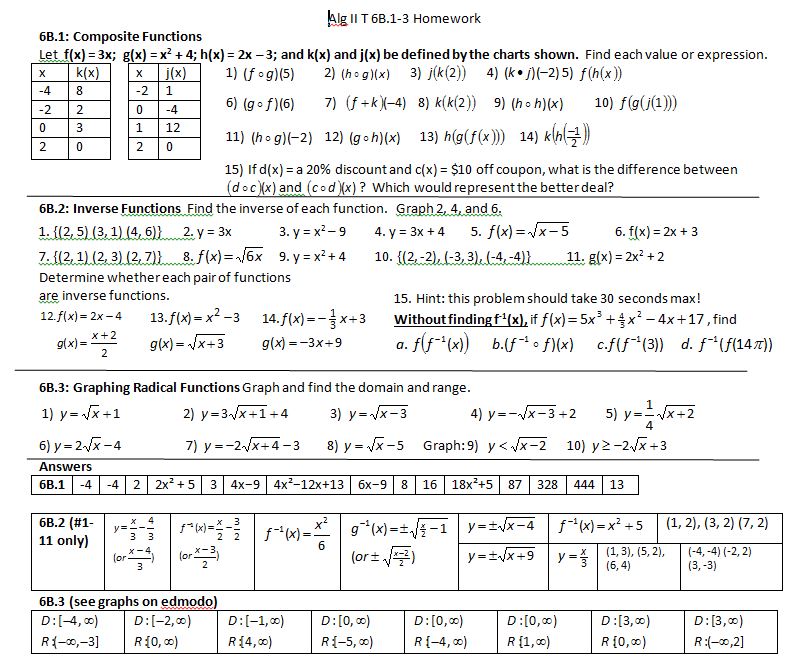 (file here)
(file here)
Ok, now inverses!
 (file here) To find out the 5 things to know about inverses, you’ll have to view the powerpoint (clickbait!):
(file here) To find out the 5 things to know about inverses, you’ll have to view the powerpoint (clickbait!):
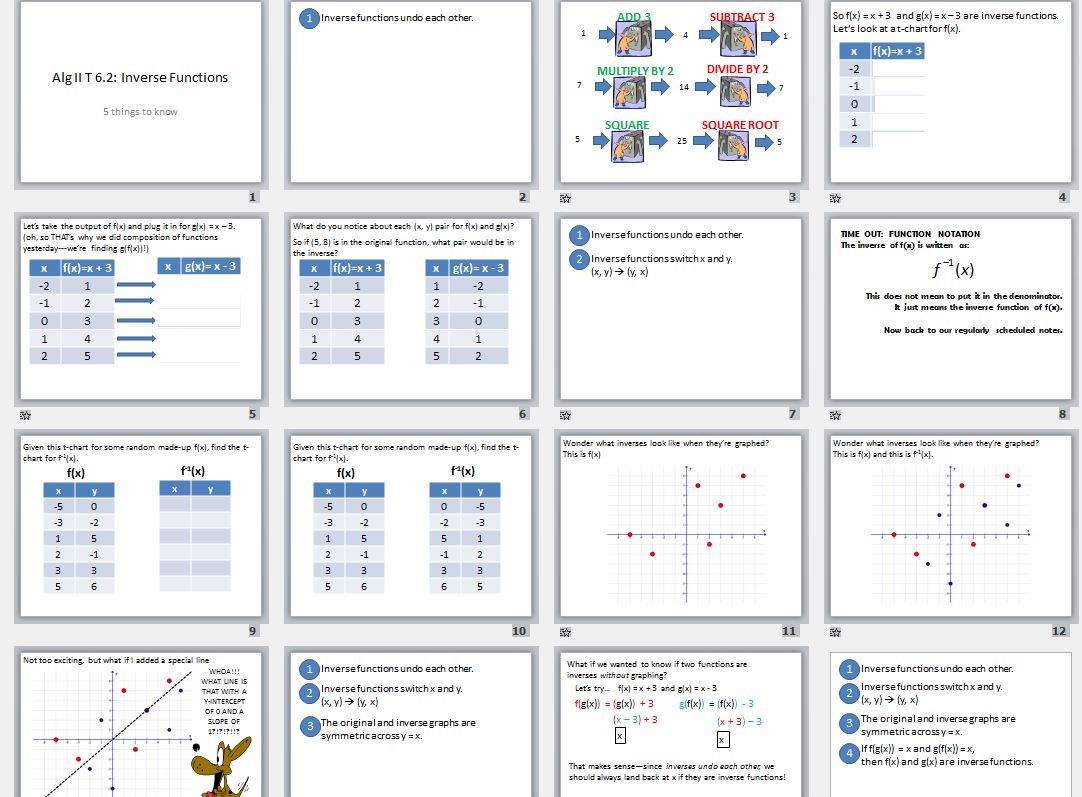 (file here) Let’s zoom in on my favorite question from the homework that was posted above:
(file here) Let’s zoom in on my favorite question from the homework that was posted above:
 (although I guess I should make it a 1:1 function?) Discussing this problem the next day is a great way to reinforce the idea of inverses!
(although I guess I should make it a 1:1 function?) Discussing this problem the next day is a great way to reinforce the idea of inverses!
Then it’s time to graph some radicals:
 (file here) and review for a quiz:
(file here) and review for a quiz:
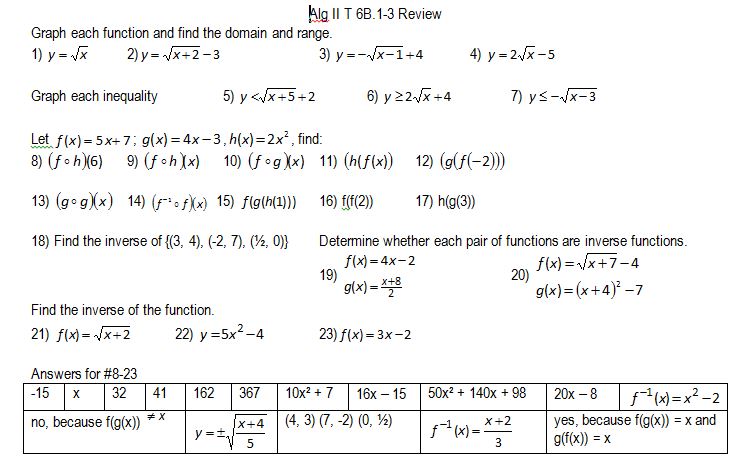 (file here)
(file here)
Then it’s time for the phrase that strikes fear in teachers, students, puppies and unicorns: EXPONENT RULES.
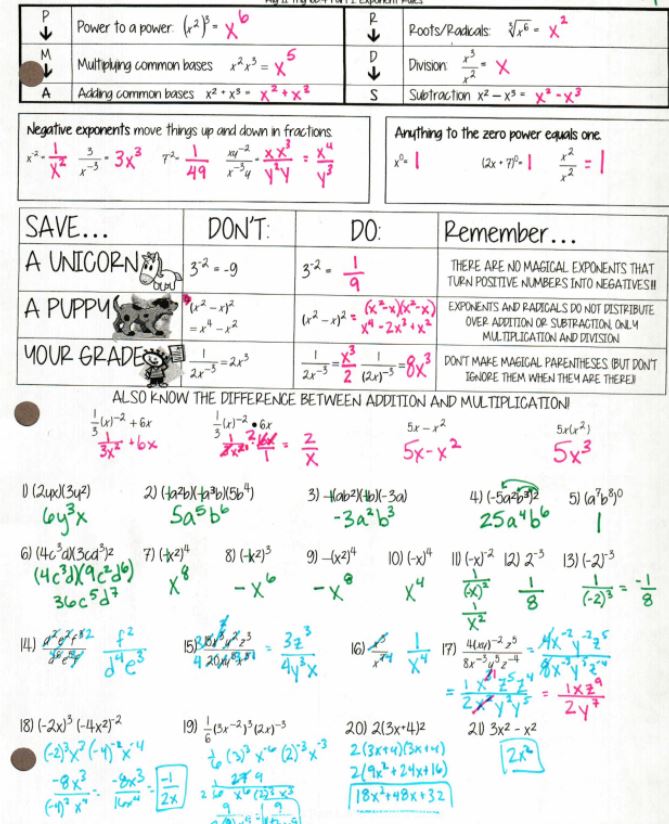 (file here) To clarify some stuff, the PMA/RDS at the top is from someone in the MTBoS. Exponent rules follow the pattern of doing operation “below” it: power means you multiply, multiply means you add, and you can’t do anything with addition since there is not a function lower than it. Then the same thing is true for roots/division/subtraction. I really wish I could find the original post because that person explained it a lot better than I can right now.
(file here) To clarify some stuff, the PMA/RDS at the top is from someone in the MTBoS. Exponent rules follow the pattern of doing operation “below” it: power means you multiply, multiply means you add, and you can’t do anything with addition since there is not a function lower than it. Then the same thing is true for roots/division/subtraction. I really wish I could find the original post because that person explained it a lot better than I can right now.
If you’re not aware of the Dead Puppy Theorem, go visit Bowman immediately! I made my own corollary which is “Every time you say a negative exponent makes the number negative, a unicorn dies.” “But Ms Craig, there’s not any unicorns left!” “EXACTLY. That’s how many students have made this mistake. There are actually 4 of them left in a secluded meadow in Ireland; it is up to you to make sure they do not go extinct.”
Homework that we do in class:
 (file here) I obviously typed this right after reading a tweet about allowing students to make choices in problems to do. It actually worked out better than I had planned because they would say stuff like, “oh, wait, this has a zero exponent, that one’s going to be easy!” As in, they were actually looking at all the problems and evaluating how they would be solving them. (Although some of them just did the first 10). I did the same thing throughout the chapter, but I just gave the instructions verbally.
(file here) I obviously typed this right after reading a tweet about allowing students to make choices in problems to do. It actually worked out better than I had planned because they would say stuff like, “oh, wait, this has a zero exponent, that one’s going to be easy!” As in, they were actually looking at all the problems and evaluating how they would be solving them. (Although some of them just did the first 10). I did the same thing throughout the chapter, but I just gave the instructions verbally.
Next up, let’s work with radicals!
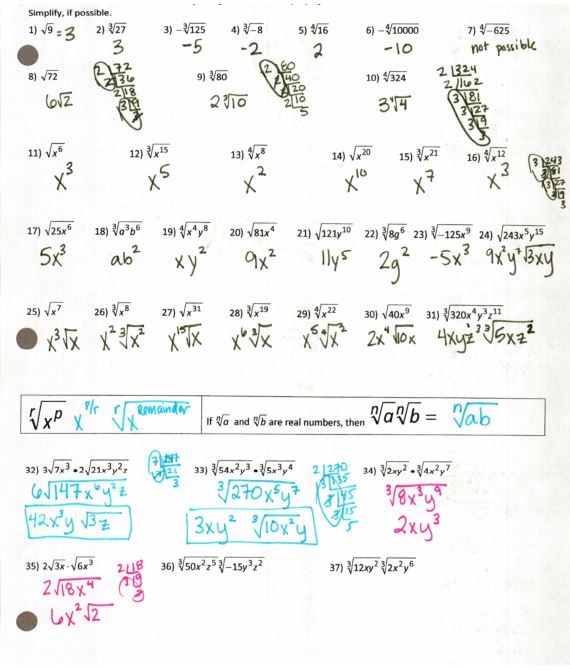
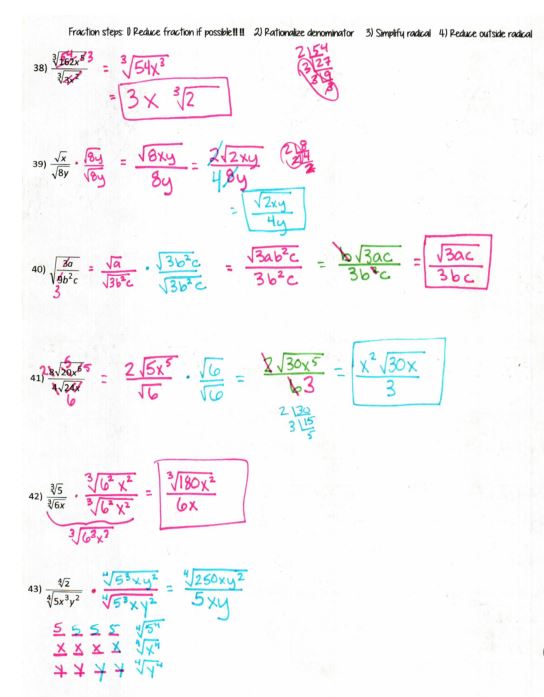 (file here) I also changed this up this year. Instead of spending one day where all the radicals were perfect, then another day when they weren’t, I started with perfect radicals but then gave them a tricky problem at the end of their practice row (#17-24). Then we discussed how we would go about simplifying them. I think it worked out pretty well. This took us most of two days to finish front and back, then we did some practice:
(file here) I also changed this up this year. Instead of spending one day where all the radicals were perfect, then another day when they weren’t, I started with perfect radicals but then gave them a tricky problem at the end of their practice row (#17-24). Then we discussed how we would go about simplifying them. I think it worked out pretty well. This took us most of two days to finish front and back, then we did some practice:

(file here) which pulled questions from this homework: (I think I called it homework because a lot of students were absent for some reason? Then they felt like they should do it rather than, “Oh we just practiced in class, nothing I need to make up.”)
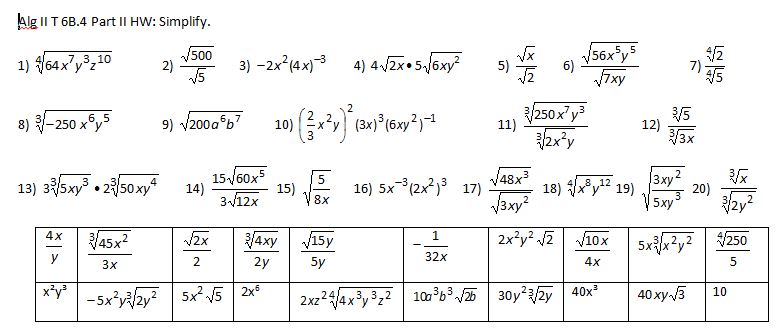 (file here) Now it’s time for some binomials, again, I mixed everything together (and this was before I read Make it Stick about varied practice!):
(file here) Now it’s time for some binomials, again, I mixed everything together (and this was before I read Make it Stick about varied practice!):
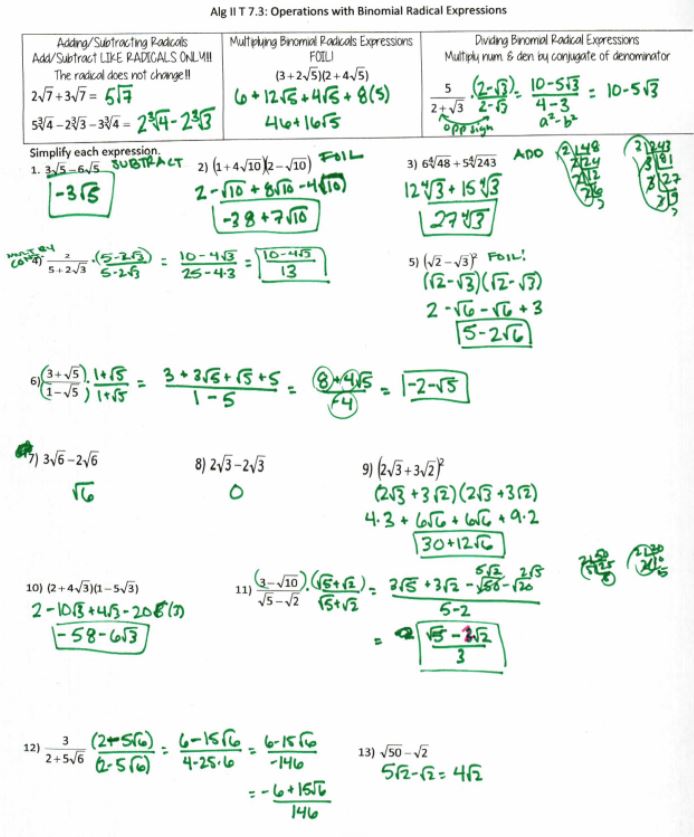 (file here) And homework:
(file here) And homework:
 (file here) And a review:
(file here) And a review:
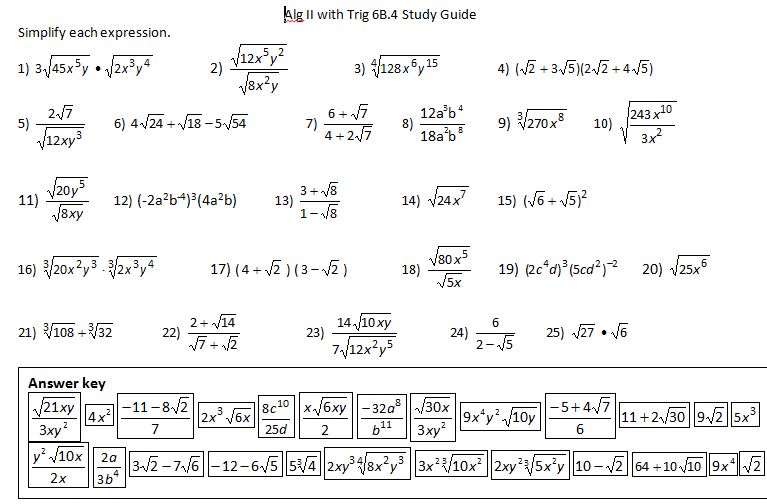 (file here)
(file here)
Ok, we’re almost there, guys! We need to talk about rational exponents:

(file here) and homework:
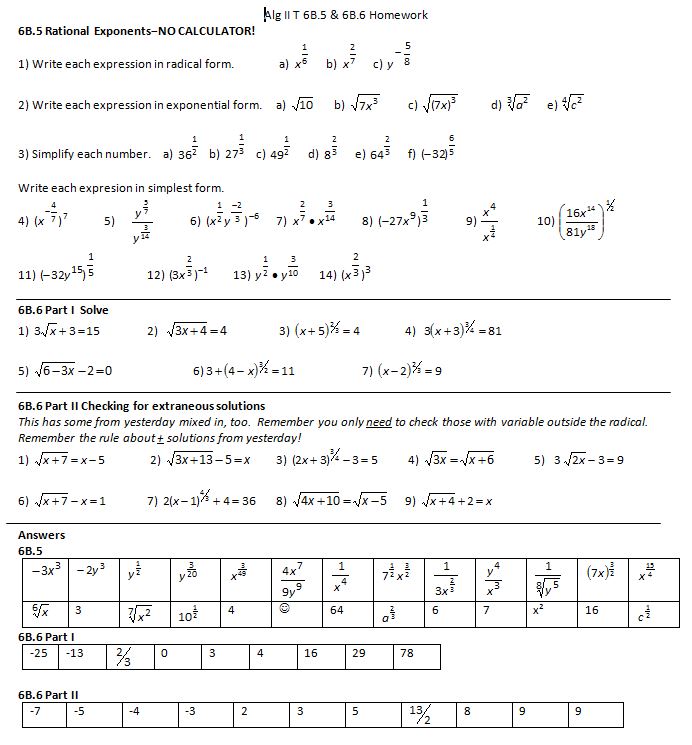 (file here) And then solving!
(file here) And then solving!
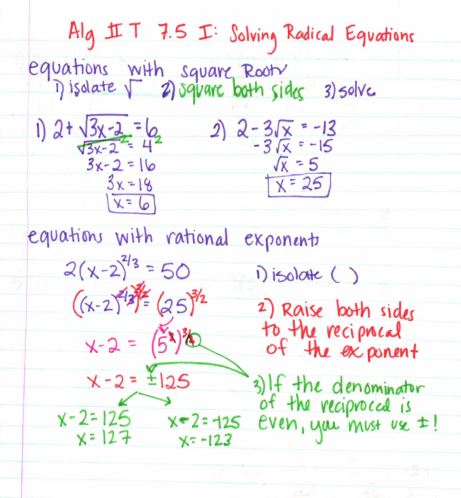
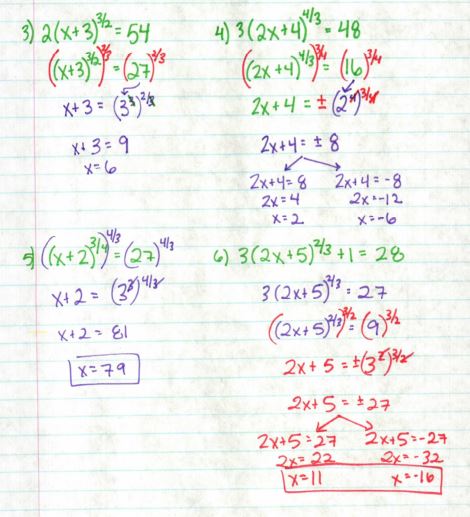 Day 2:
Day 2:
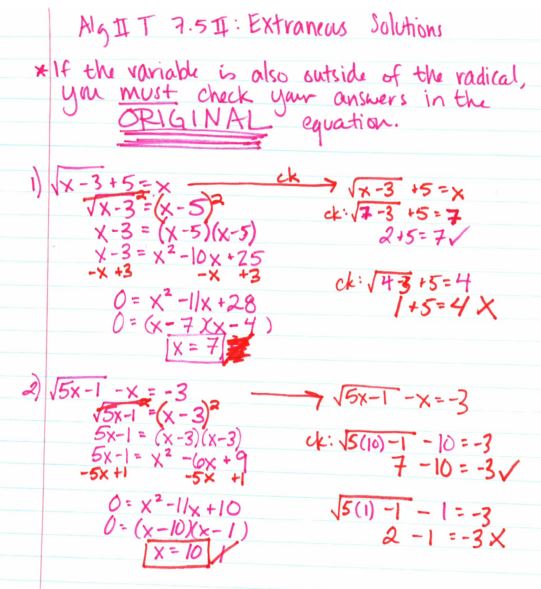
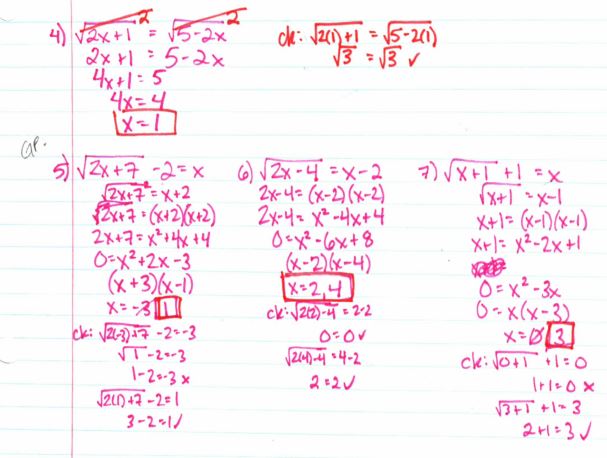 Finally it’s time for the last quiz of the chapter! Review:
Finally it’s time for the last quiz of the chapter! Review:
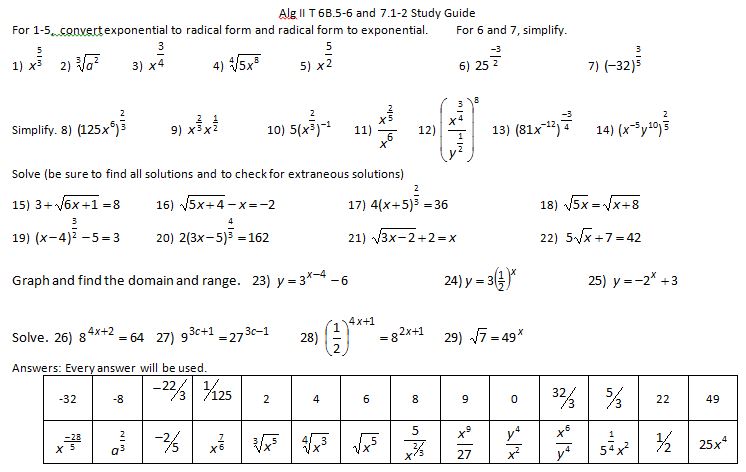
(Due to weird scheduling issues this year, we started the next chapter before we quizzed.)
(File here)
Of course there’s a powerpoint! It’s more of an overview (i.e. not the same probs as study guide).
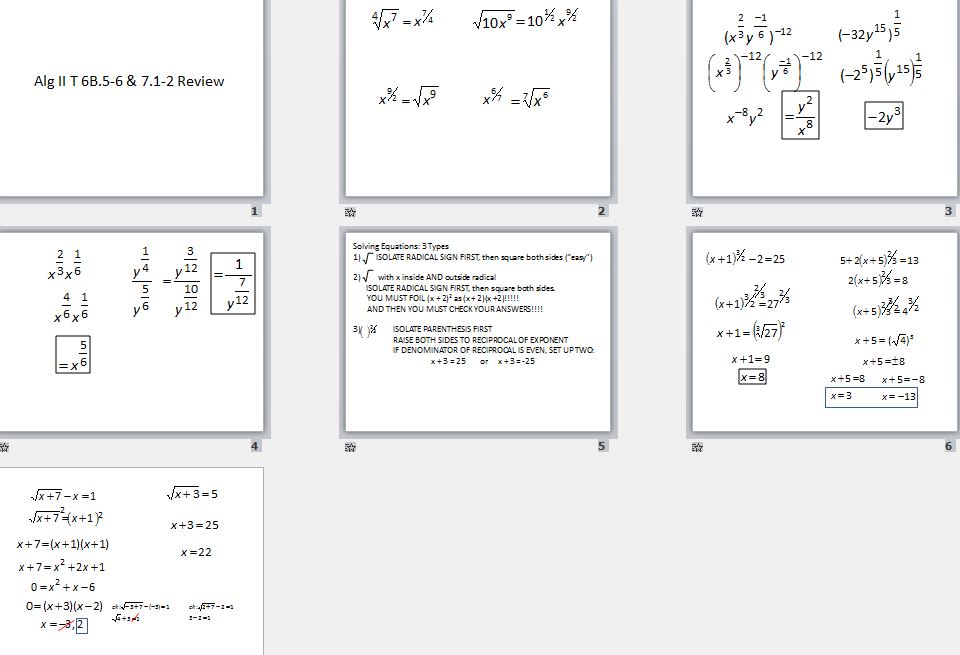 (file here)
(file here)
So, holy cow, I have a lot of stuff for radicals. Kudos for you to reading til the very end!
